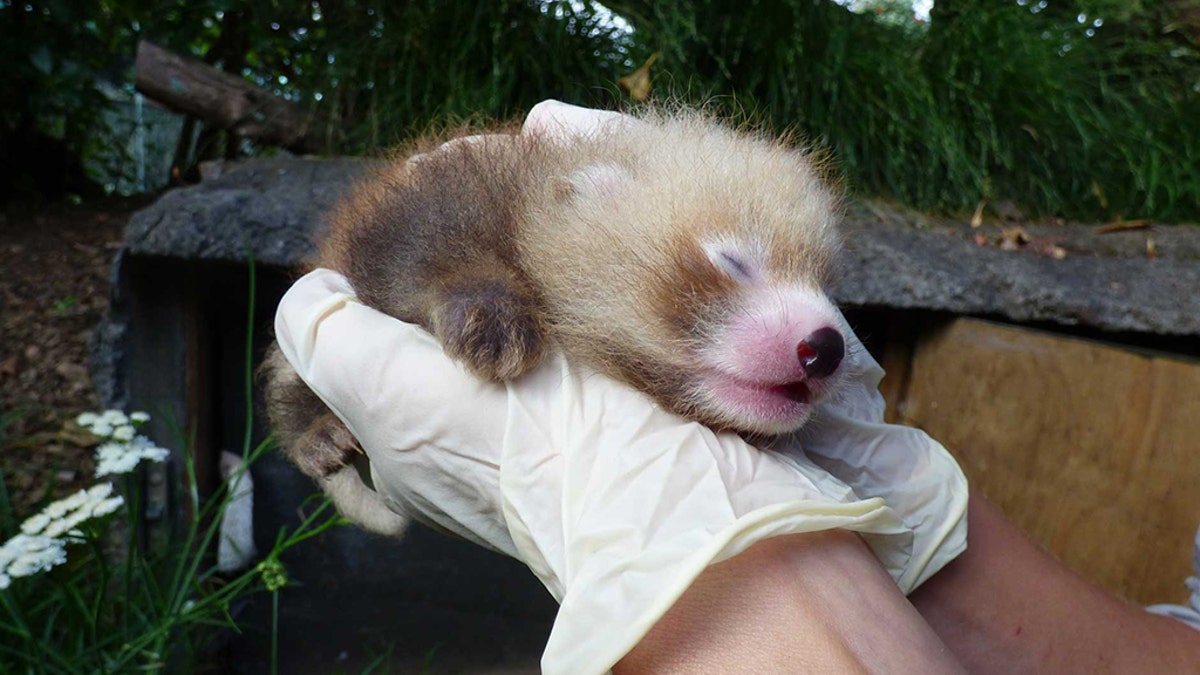
(Credit: Auckland Zoo)
It might sound like a strange job but when you see the end product it definitely produces the cutest result.
If you missed the adorable pics of the fluffy red panda triplets born at Sydney’s Taronga Zoo, we bring you another cute little guy — but now with an added Tinder-style backstory.
The triplets were part of the Zoo and Aquarium Association’s breeding program for zoos across Australasia.
Species co-ordinator Matt Clifton has the special task of helping each red panda find their perfect partner to boost the endangered animal’s insurance population.
Mr. Clifton searches far and wide to play cupid for the animals as part of a global breeding program.
“It’s not exactly Tinder but I do use software to help work out which pandas could be a potential match,” Mr. Clifton said.
“Once the pandas have been paired up, based on many factors such as social compatibility and genetic diversity, it’s the job of the zookeepers to make sure their first date goes well.”
With every meeting getting a little longer than their last, the shy pandas are soon ready to spend the night together, which means it’s time for the keepers to start talking birth plans to ensure mum and cubs are happy and healthy.
“The entire process is usually as hands-off as possible, giving the panda families a chance to bond and behave naturally while video technology allows keepers to monitor the animals and assist if needed,” Mr. Clifton said.
Auckland Zoo’s new cubs Tashi and Taronga Zoo’s Rohan, Ishwar and Mishry join older cubs in the breeding program from Perth Zoo, Symbio Wildlife Park and Wellington Zoo.
The breeding program has contributed 35 healthy cubs to the global program since 2012.
While breeding programs are a key part of conservation, they are only one part of the fight to save an endangered species like the red panda, found in the eastern Himalayas and southwestern China.
Mr. Clifton said work that took place in the field to ensure the remaining animals left in the wild were protected in their natural habitat was just as important.
“What a lot of people don’t realize is just how much zoos contribute to supporting their field conservation partners,” he said.
Zoos accredited with the association that hold the species are also funding the Red Panda Network.
The funding is used to support community education and specialized training for “Forest Guardians” that track and monitor the animals’ activity throughout protected areas established by the network.
The program benefits red pandas, people and the environment they share, supporting the livelihoods of more than 1000 families in Nepal and giving locals a new-found appreciation for the animal and its environment.
The association and its member zoos lead more than 100 breeding programs in support of conservation and community education.
This story originally appeared in news.com.au.
